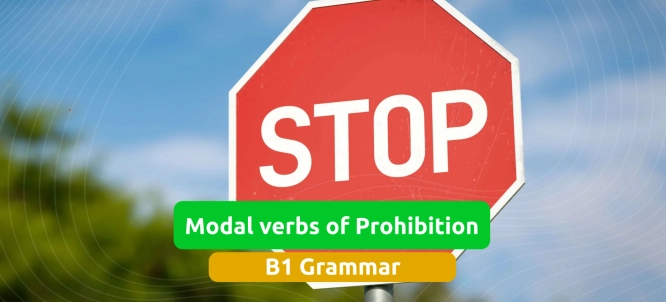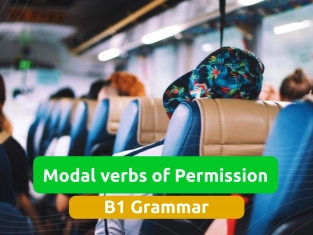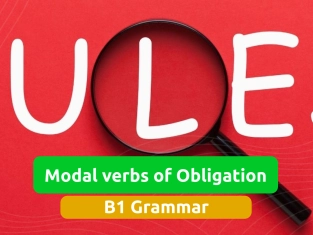by PushtoLearn
Verbos modales de prohibición en inglés
Tabla de contenidos
Ejercicios sobre los verbos modales de prohibición
Estos ejercicios se enfocan en los verbos modales de prohibición.
Reglas para usar los verbos modales de prohibición
|
Verbo Modal |
Significado |
Ejemplo |
|
must not |
Regla estricta o prohibición tajante |
You must not touch this button. |
|
cannot |
Restricción general o imposibilidad |
You cannot park your car here. |
|
may not |
Prohibición formal o educada |
You may not enter the meeting room. |
Estructura básica de la oración:
Sujeto + verbo modal + verbo base
Ejemplo: He must not run in the hallways.
No se debe usar “to” antes del verbo base.
Incorrecto: You must not to eat here.
Correcto: You must not eat here.

Diferencias entre Must Not, Cannot y May Not
|
Verbo Modal |
Uso |
Ejemplo |
|
must not |
Prohibición estricta, usualmente para reglas o advertencias |
You must not drive without a license. |
|
cannot |
Prohibición por restricción o imposibilidad |
You cannot enter this area. |
|
may not |
Prohibición formal o educada, a menudo en contextos oficiales |
Students may not bring phones to class. |
Uso cotidiano de los verbos modales de prohibición
1. En la escuela:
-
Students must not cheat during exams.
-
You cannot leave school before dismissal.
-
Visitors may not enter the library without permission.
2. En el trabajo:
-
Employees must not disclose confidential information.
-
You cannot access this file without a password.
-
Staff may not take personal calls during meetings.
3. En lugares públicos:
-
You must not smoke in the park.
-
You cannot park your car in a handicapped spot without a permit.
-
Passengers may not board the bus without a valid ticket.
Errores comunes y cómo evitarlos
|
Error |
Por qué está mal |
Versión correcta |
|
He must not to speak loudly. |
Se agrega “to” antes del verbo base. |
He must not speak loudly. |
|
They don’t must use phones. |
Se mezclan los verbos modales con “don’t”. |
They must not use phones. |
|
You mayn’t enter here. |
Se usa la contracción rara "mayn’t". |
You may not enter here. |
|
We can’t to drive here. |
Se agrega “to” antes del verbo base. |
We can’t drive here. |
Cómo elegir el verbo modal adecuado para prohibición
|
Contexto |
Verbo Modal |
Ejemplo |
|
Regla fuerte y directa |
must not |
You must not bring food here. |
|
Restricción general |
cannot |
You cannot enter this area. |
|
Tono formal o educado |
may not |
You may not use the staff entrance. |
FAQ sobre los verbos modales de prohibición
¿Cuál es la diferencia entre “must not” y “don’t have to”?
Must not significa que algo está prohibido.
Ejemplo: You must not lie to your teacher.
Don’t have to significa que algo no es necesario.
Ejemplo: You don’t have to wear a tie to the meeting.
¿Puedo usar “may not” en lugar de “must not”?
Sí, pero may not es más formal y educado, mientras que must not es más fuerte y estricto.
Ejemplo: Visitors may not take photographs in the gallery.
You must not touch the paintings.
¿Cuál es la diferencia entre “cannot” y “may not”?
Cannot indica restricciones generales o imposibilidades.
Ejemplo: You cannot park here without a permit.
May not niega el permiso de manera educada.
Ejemplo: You may not park here after 8 PM.
¿Puedo usar “should not” para prohibir?
No. Should not expresa un consejo, no una prohibición.
Ejemplo: You should not eat too much junk food (consejo).
You must not bring drinks into the lab (prohibición).
¿Se usa “mayn’t” en el inglés moderno?
No. La contracción mayn’t casi no se usa hoy en día. Es mejor decir may not.

